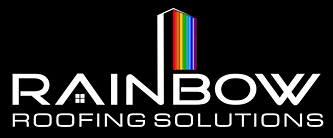
A commercial roof is the roof structure for a commercial building and structure. This type of roof tends to have a low slope or is entirely flat and is much larger than a typical residential roof. Commercial roofing systems differ from residential ones because they are larger and built to last.
Types of commercial roof
Flat roof: This type of roof is an ancient type that is almost level in contrast to other types like the sloped.
Low-sloped roofs: This is a nearly flat or slightly pitched roof. A low-sloped roof is ideal for helping in drainage purposes.
Pitched roofs: This type of roof slopes downwards at an angle from the central ridge.
These three types of roofs have been associated with both advantages and disadvantages, and they are outlined below:-
Advantages of flat commercial roofs
- They are cost-efficient in installation, which will save money for the client.
- They have a simple design, making the installation process easier and faster than other roofing types.
- This roof has reflective properties making it efficient in reducing energy waste from cooling costs.
- It’s easier to install air conditioners, solar panels, and satellites than pitched roofs.
- Easy to maintain and clean the drain because it’s easier for workers to walk on safely regardless of the weather conditions.
Disadvantages of flat commercial roofs
- These roofs have a slower drainage property due to the lack of a slope making it easy to degrade the roofing materials.
- The material damage can bring unnecessary expenses to a building owner in a short period, which reduces its life span.
- Poor drainage can cause roof leakages which can cause damage to the interior of the building.
Advantages of low-sloped roofs
· The low slope design has better drainage because it has a low slope design.
· This roof offers a less squared roof area which requires less square footage in flooring materials which becomes cheaper for the client.
· Low-sloped roofs offer more accessible and safer conditions for workers in case of maintenance and repair, unlike the high pitched roofs.
· It’s easier to install air conditioners, solar panels, and satellites than pitched roofs.
Disadvantages of low-sloped roofs
- Snowing can bring a weight issue to the roof, which might cause damage and weaken the materials.
- Installation costs are high compared to the flat roof design.
- Construction of low-sloped roofs is disruptive and takes longer when compared to flat roofs. This affects all the activities that go on in the building.
Advantages of Pitched roofs
- This roof has increased runoff because of the increased slope, which reduces the risk of water damage and mold growth.
- Due to the steeper roof structure, the liquid and debris roll off quickly, which reduces water build-up that could lead to leaks, mold, and material damage.
- A high-pitched roof reduces the need for repairs and maintenance compared to the other commercial roof options.
Disadvantages of Pitched roofs
- Pitched roofs are expensive to install compared to other commercial roofs.
- The steep incline makes it difficult for maintenance and repair functions.
- In the case of maintenance and repairs requirements, there is a need for increased safety procedures that increase costs to the client.
Commercial roofing systems enjoy a long lifespan, from twenty to forty-five years. The installation of these roofs can be laborious and involves using several materials on the surface. As they are meant to last, commercial roofs come with excellent and high-end warranties, and the installation process should be assigned to experts and professionals.
Suppose you are looking to secure a commercial roof for your building. In that case, you must consult an experienced roofing expert who will advise you on the available materials and benefits.


